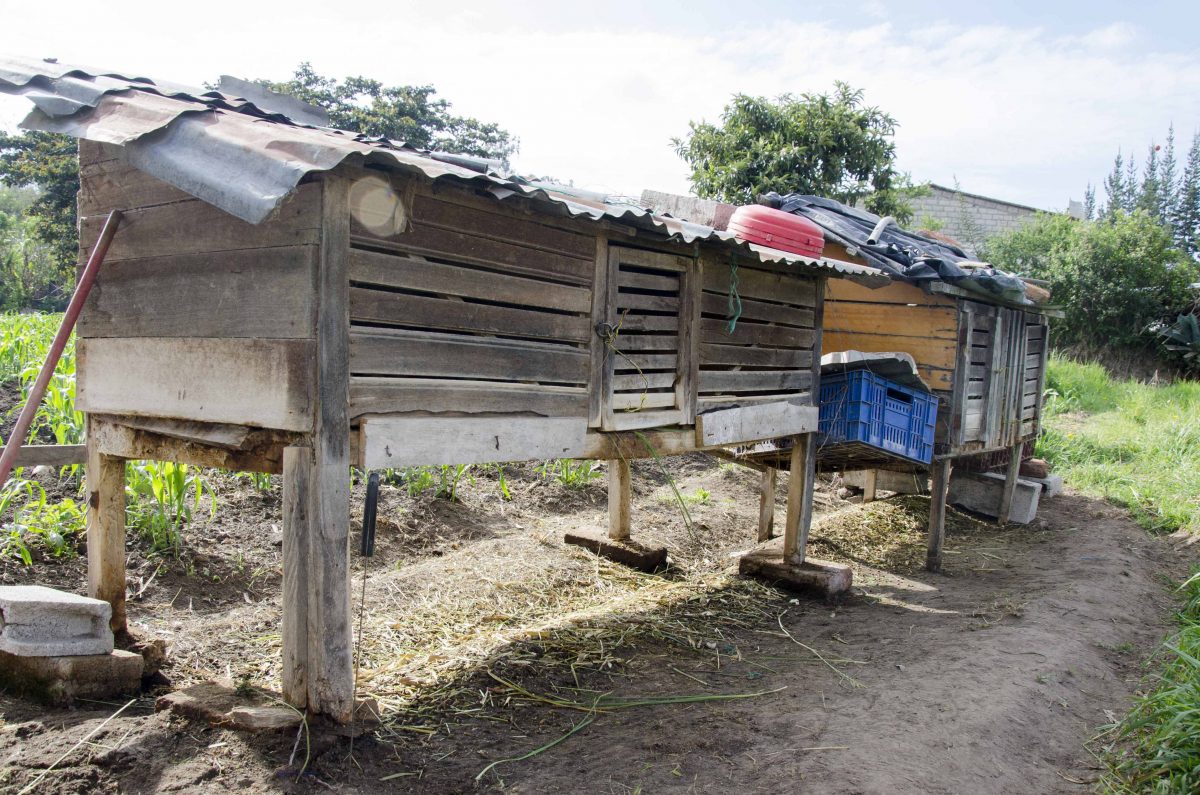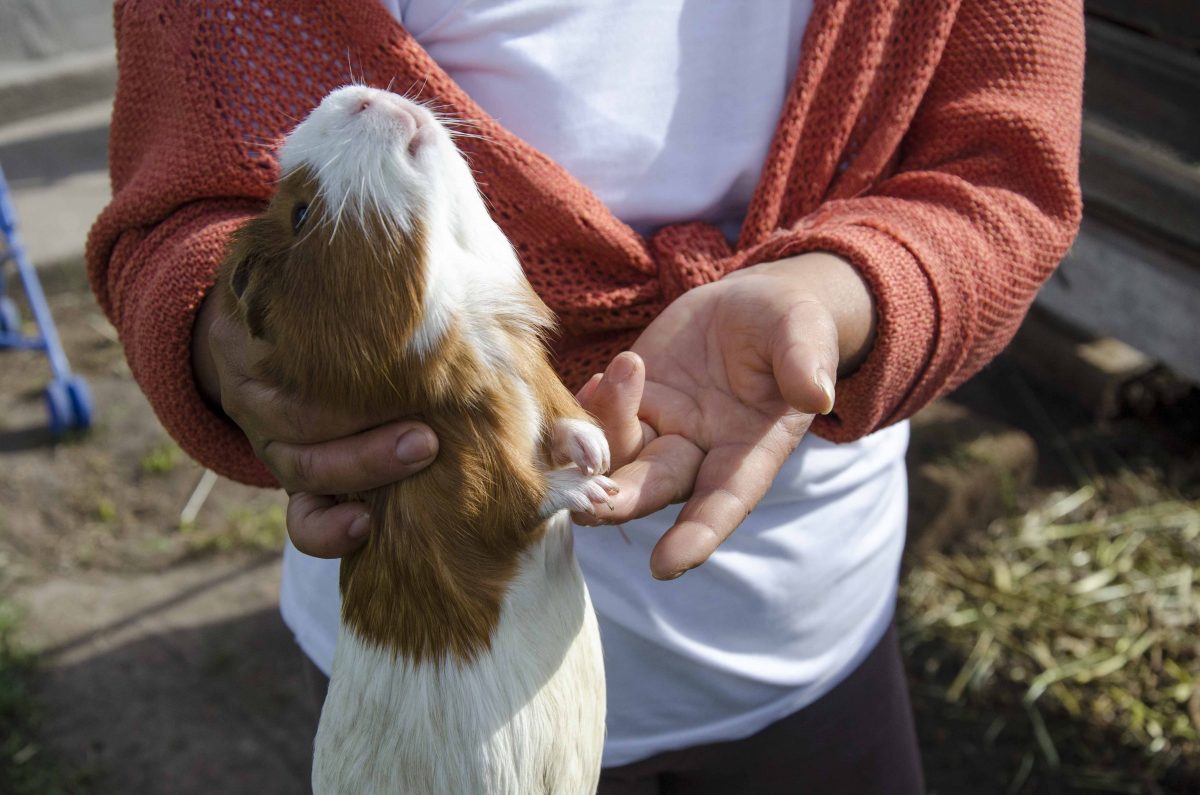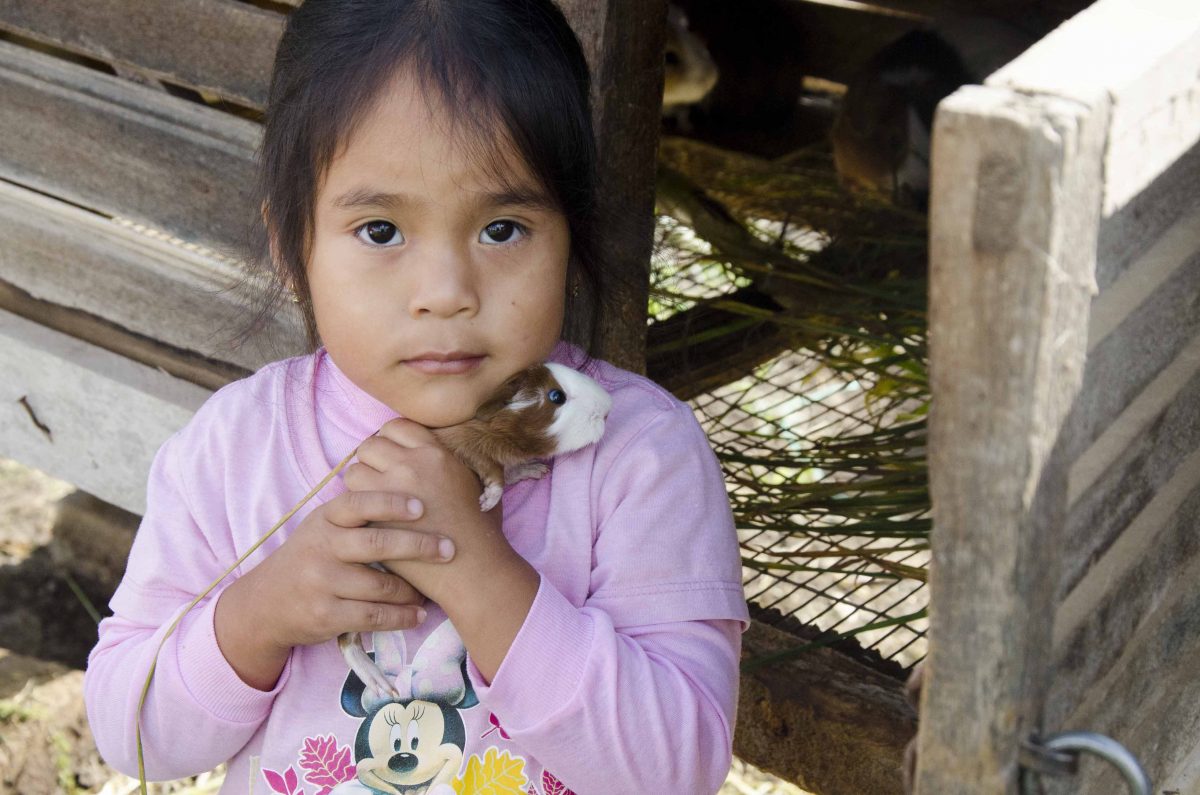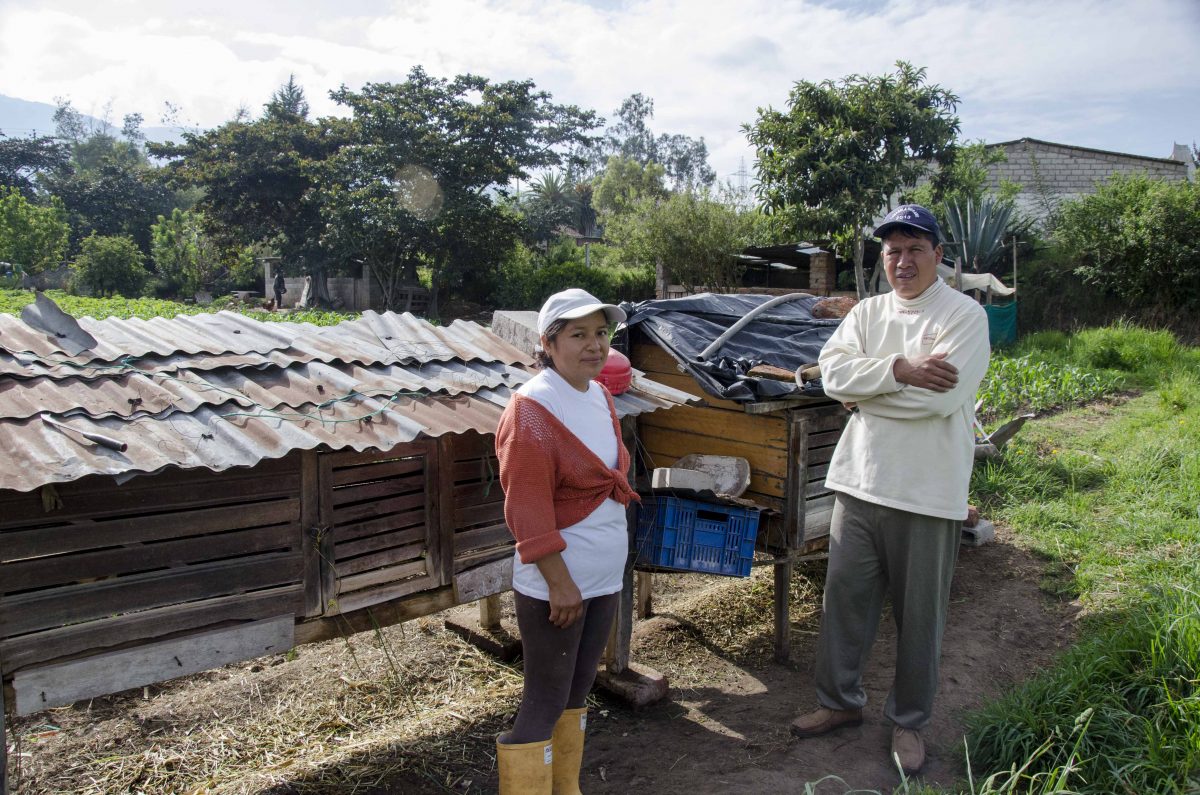As responsible travelers evolve, so do the stories we share.
This article is part of our living archive — trusted content we continue to care for.
First published on February 9, 2022 • Last updated on February 9, 2022.
In 2015, I visited a local farm in Oyambarillo, not far from the Quito airport, where a local family raises guinea pig for eating. My hosts were Edwin Paillacho and his wife, Sonia Cachago. I can’t thank them enough for letting me spend some time photographing their finca and asking tons of questions. All of this in preparation for an article I wrote on marketing cuy (the local name for guinea pig), in the United States in Modern Farmer Magazine.
These are the hutches where the guinea pigs are kept. The first hutch is for mothers and young. The second hutch has two compartments, one for females and one for young males. They need to be kept separate as guinea pigs will mate like rabbits and it is better if the young females have time to mature before getting pregnant the first time.
These guinea pigs are very shy. As the door to the hutch was opened, every animal fled to the back corner. These animals are not pets and do not like to be held or touched. Throughout the visit, they made a noise that sounded vaguely like chickens, a light chirping sound. Edwin told me that they are normally very quiet animals but become anxious around people. Sonia added that even a dog walking by could cause distress.
I specifically asked if these animals are ever pets and they looked a little askance and shook their heads no. Ecuadorians, especially indigenous Ecuadorians, are so used to raising cuy for meat that the concept of one of these animals being a pet is pretty odd. Even when their young daughter, Victoria, picked up a baby guinea pig, it was clear that the young creature wanted only to escape her little hands.
The cuy that are ready for eating are very large, up to 2 kilos in size. A friend in Nayon told me that the even larger breeds of cuy can be found, up to 3.8 kilos or about 8 pounds. These animals can scratch and bite and are more than a handful to manage. In fact, I recently read that in California, many guinea pigs are being brought to animal shelters because they are not fit to be pets. Their behavior is more like the breeds of guinea pigs raised for meat rather than those raised to become pets.
Thanks to my good friend, Maribel Quija, who continues to introduce me to locals who are willing to share their culture and experience with this American. She is also the owner of Chi-sinchi Tambo Orgánico in Nayón, Ecuador and makes deliveries of fresh produce in Quito.
I am very fortunate to have found so many people, like Sonia and Edwin, who open their homes and their hearts to my camera and notebook. I hope that you make the same kinds of connections when you visit this wonderful country!



























Trying to find out how to get a pair of Cuy to breed in VA for my family.
Hi Jennifer, this sounds like an adventurous proposition. Could you reach out to me via angie@notyouraverageamerican.com? I would love to see how we could help you out. This is a project I would definitely like to follow.
I ate cuy a few years ago in Ecuador and am very interested in learning how to raise them for food for family use, not for sale. I would like to follow your articles. How can I best do that? Key issues to cover are: where to obtain breeding stock; finca management set up and techniques; what to feed and how much; how to sex them, how to kill them humanely — all from a US point of view. Thanks. Michael
Hi Michael! I will share my published articles on the Not Your Average American Facebook page… even those not published by this blog. The next article on Modern Farmer magazine is mostly about the potential market and the legalities. If you want more, please leave a comment with Modern Farmer magazine (after the article publishes, of course!) and I will try to convince them of the need for a basics on Guinea Pigs piece as well!
Mike – please feel free to let Modern Farmer know you want a practical article on raising guinea pig! http://modernfarmer.com/2015/12/cuy/